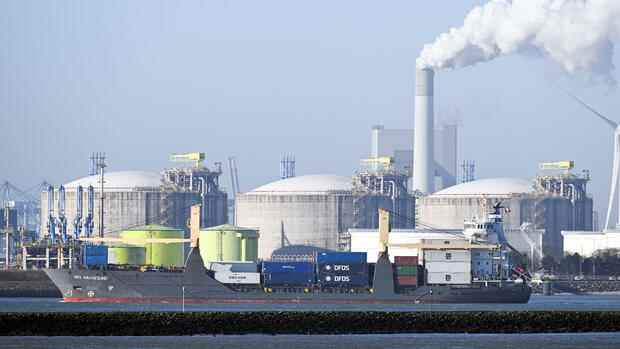There will soon be four floating liquefied natural gas terminals in Germany.
(Photo: dpa)
Berlin On Tuesday, the federal government announced the decision on the other locations for floating terminals for landing liquefied natural gas (LNG). The gas should arrive in Stade in Lower Saxony and in Lubmin in Mecklenburg-Western Pomerania from the end of 2023.
In Lubmin, another fifth floating liquefied natural gas terminal will be built by a private consortium by the end of 2022. It was already known that a terminal would be built in Wilhelmshaven and Brunsbüttel, which should be supplied from the upcoming turn of the year.
Hamburg and a second floating terminal in Wilhelmshaven have also been under discussion to date, according to a letter from the Ministry of Economic Affairs to the coalition partners, which is available to the Handelsblatt. According to informed circles, Hamburg is said to have gone empty-handed mainly because the risk associated with gas deliveries in the narrow port of the megacity was too great.
The Hamburg member of the Bundestag Michael Kruse (FDP), energy policy spokesman for his parliamentary group, was disappointed: “A bitter day for the port of Hamburg and its energy-intensive industry.” He spoke of a “severe setback” for the Hanseatic city.
Top jobs of the day
Find the best jobs now and
be notified by email.
Reinhard Houben, economic policy spokesman for the FDP parliamentary group, said: “The decision for Stade is the right one. Technically and geographically, the location has clear advantages over Hamburg.”
The Lubmin location had already been discussed in the first round when the terminals were awarded. At that time, however, there were still reservations because there were uncertainties with regard to the water depth on site. Lubmin is also the terminus of Russia’s controversial Nord Stream 1 and 2 gas pipelines.
Habeck: “A pace that has never existed in Germany before”
LNG is to become the key pillar to become independent of Russian gas and to mitigate the consequences of a possible delivery stop via Nord Stream 1. Germany is already buying large quantities of the raw material that can be transported by ship on the world market.
So far, the liquefied gas has to be forwarded from the countries of arrival after being re-evaporated. It is currently arriving in ports in France and the Netherlands, for example.
Economics Minister Robert Habeck (Greens) urges haste. “We have to build a new infrastructure as quickly as possible in order to be able to replace Russian gas as quickly as possible,” he said about the location decision. Each of the four LNG vessels leased by the federal government can take in and regasify at least five billion cubic meters of gas per year.
In order for the floating terminals to be able to feed into the German gas network as quickly as possible, the LNG Acceleration Act created the legal basis for accelerating construction. “Ultimately, we have to set a pace that hasn’t been seen in Germany before,” said Habeck.
More: Energy hope Liquefied natural gas – How a floating LNG terminal works

